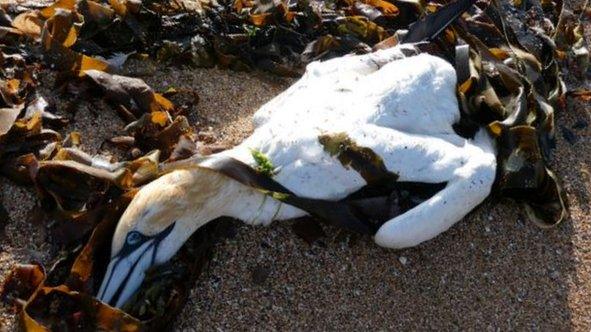Bass Rock's gannet colony 'recovering' after avian flu
- Published
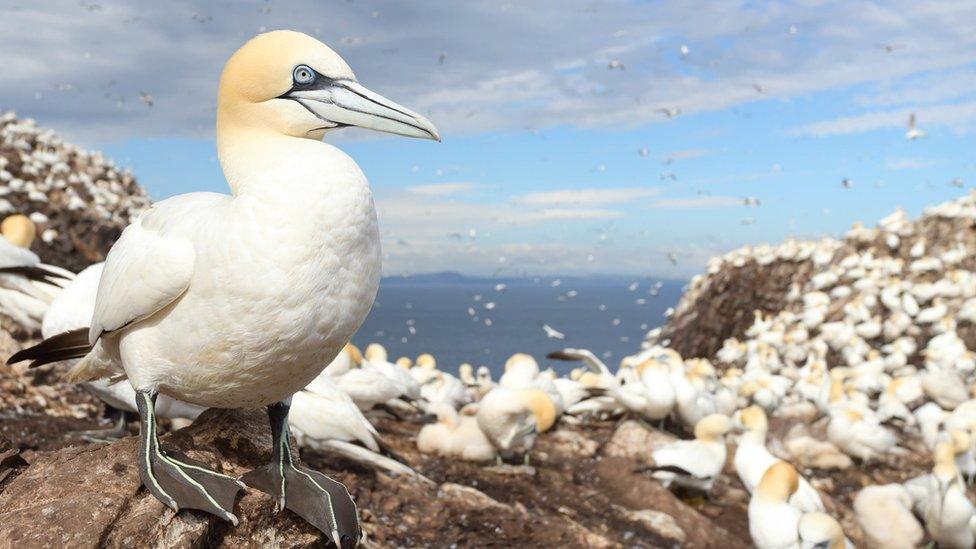
There are signs of a much-improved breeding season among gannets on Bass Rock
The world's largest colony of gannets on Bass Rock in the Firth of Forth appears to be recovering after being devastated by bird flu, scientists say.
Thousands of birds died last year after catching the virus in the middle of the breeding season.
Researchers from the University of Edinburgh are carrying out a population survey using drones and artificial intelligence to count numbers.
But there are already signs of a much-improved breeding season this year.
Bass Rock's colony of northern gannets - the largest European seabirds - grew from about 4,000 breeding pairs in 1960 to over 75,000 until last year - or around 150,000 birds during the breeding season.
A recent study found the adult birds' survival between 2021 and 2022 was 42% lower than the preceding 10-year average because of avian flu.
Images comparing the density of gannets on the rock showed far fewer birds, with concerns the decimated population could be insufficient to sustain the colony.
But scientists and staff at the Scottish Seabird Centre in North Berwick are optimistic that when the current survey is complete, numbers will have recovered substantially.
'Better than ever hoped for'
Maggie Sheddan, a volunteer at the centre for more than 20 years, has visited the island on a weekly basis.
"It's really just been so wonderful to see, because this colony was decimated last year," she told the BBC's Climate Editor Justin Rowlatt.
"We didn't know what we were coming out to this year. There are still swathing gaps but so many pairs have survived and returned. They are looking amazing and producing chicks.
"We were confident they would survive last year but we didn't know. There is no question it's better than we ever hoped for. To see so many established breeders come back is just wonderful."
Ms Sheddan said that in areas where there were pockets of just two or three birds last year, there were now "probably 100-200".

Bass Rock is home to the world's largest colony of northern gannets
The presence of 'immature' birds on the rock - those which are three or four years old - was evidence of "almost the birth of a new colony", she said.
With three nests per sq m at its peak, and birds returning to the same spot each year where they 'own' territory, space was previously at a premium for newcomers.
"We have not seen immature birds on the rock for so many years, so it's exciting," Ms Sheddan said. "We've got established breeders and single birds that have lost a partner, but still own the territory.
"But you're getting new birds flying around going, 'Oh look at that space, I've not seen that gap before'. It shows you how empty it was because there is no way they would have got in before. It was full.
"What we are seeing now is what looks like a healthy colony. It will be really fascinating to see how it settles and pans out."
'Various stages of death'
Ms Sheddan recalled the day she visited the rock last summer, when there were reports of bird flu spreading down the east coast of Scotland from Shetland.
"It was heart-wrenching," she said. "We knew it was happening, we were finding dead birds on the beach.
"The lower area of the rock was still covered with gannets, but when we arrived and they all took off, which they do when they're non-breeding, I could see there were sick ones among them.
"I unlocked the gate and behind it were gannets five or six deep, in various stages of death."

The carcasses of dead gannets littered Bass Rock last summer
Ms Sheddan described gannets as "arrogant" birds that will attack even when injured - but on this visit she said it was like the birds could not see her.
She said: "Some were hanging their heads, some were fitting - their whole bodies were thrashing, their head rolling backwards. When they have the virus, they have no control, it is neurological. They just flop.
"I got up to the main colony and found about 40 dead. Then I thought, 'OK, we have got it'.
"I collected a few specimens to take down and then had my moment: 'Oh my goodness, I have seen this colony grow over 20 years, and I think I am going to see this colony die in front of my eyes'. I knew this was dreadful.
"Every time I came up, there were more and more dead birds. The rock was emptying. It was heartbreaking, because gannets are so strong. Birds were dying on the nest. One had died with a mummified egg underneath it."
A team of experts were recently allowed to carry out blood tests on the gannets to investigate their health and eye colouration.
It found birds with black irises instead of the usual pale blue colour had previously survived avian flu.
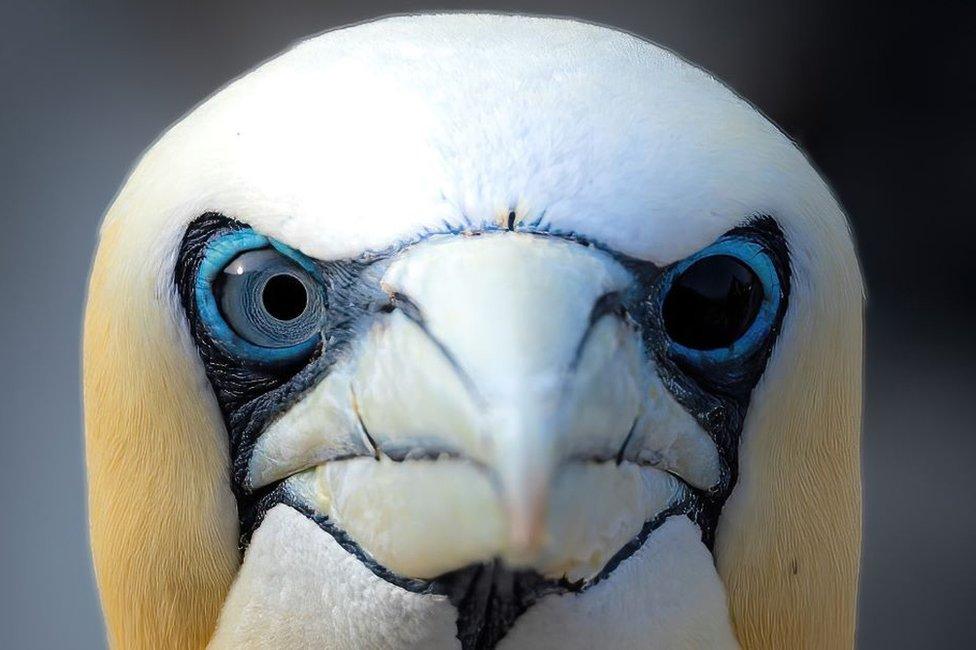
Gannets with black irises were first spotted on the island in June 2022
Amy Tyndall and Tom Wade from the University of Edinburgh's school of geosciences are now carrying out a population survey using drones.
Ms Tyndall said they are trying to use artificial intelligence (AI) to automatically detect live and dead birds on the rock and those sitting on nests - because "humans are far more prone to error".
The team hope to report their findings in the coming months.

At the scene - BBC's Climate Editor Justin Rowlatt
Scientists on their latest fact-finding mission to Bass Rock sent up a drone to take aerial shots of the gannets - but you don't need the AI systems they're using to see that thousands of birds have returned to the rock.
Its looming crags were topped with a great swirling cloud of swooping, soaring birds. Their raucous bickering was audible even above the sound of the boat's engines.
Gannets are the UK's largest seabird. They are confident and aggressive and squawked and pecked at me as I walked up the path from the rocky mooring.
Many of the birds were defending nests, most complete with a scrawny chick.
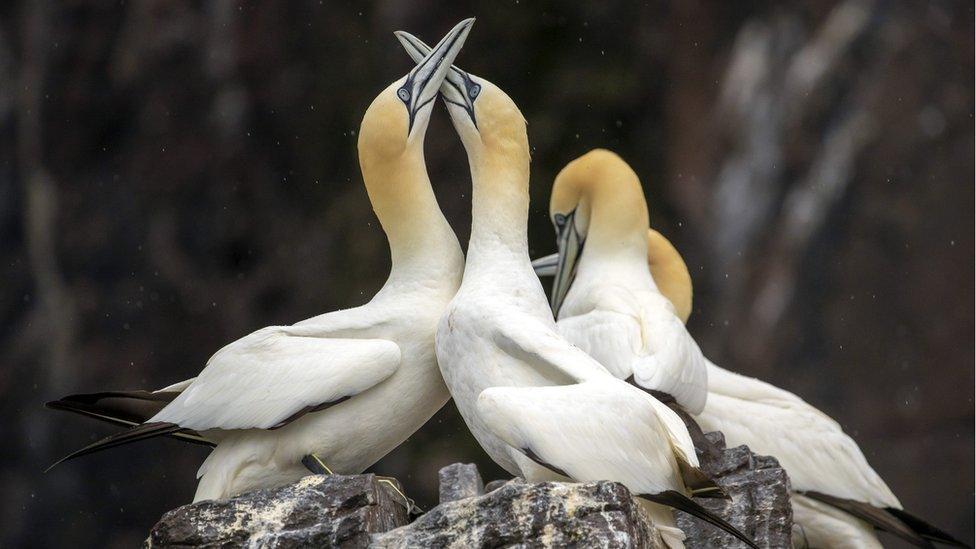
But there are thousands of single birds too. Gannets pair for life. These birds are waiting for partners who will almost certainly never return.
It is clear the population has taken a big hit, but Maggie Sheddan of the Scottish Seabird Centre is optimistic for the future.
It may take a decade or more, she said, but the colony will recover.
The gannets of Bass Rock will survive.
Related topics
- Published30 June 2023
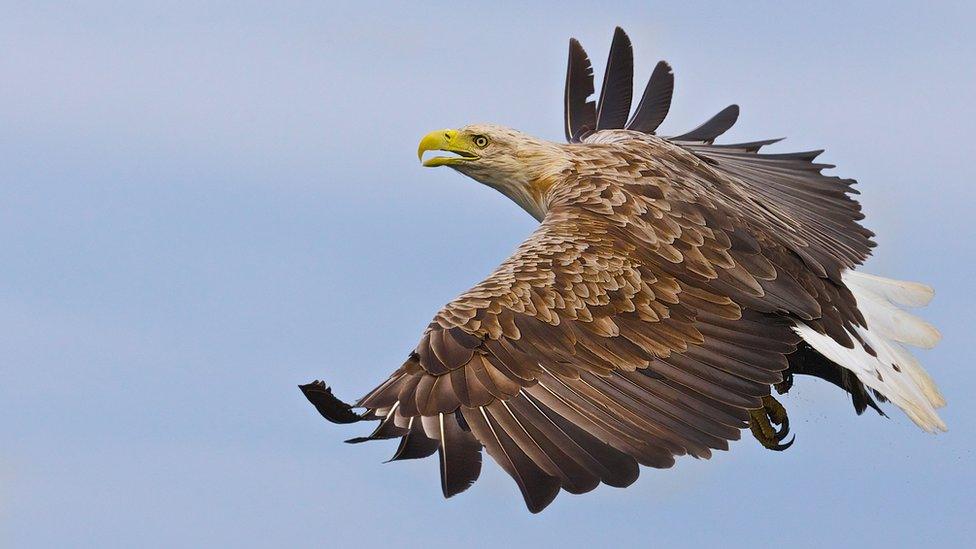
- Published21 June 2023
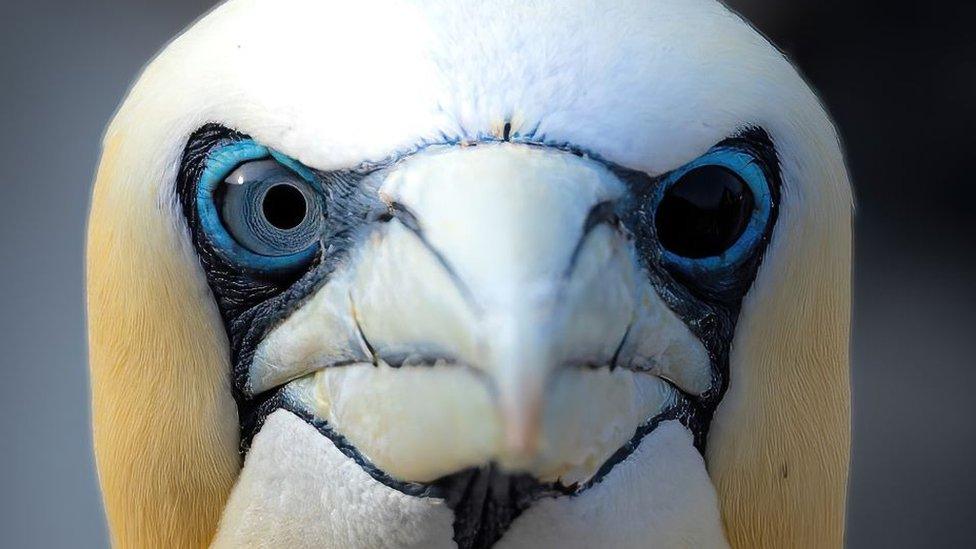
- Published16 June 2023
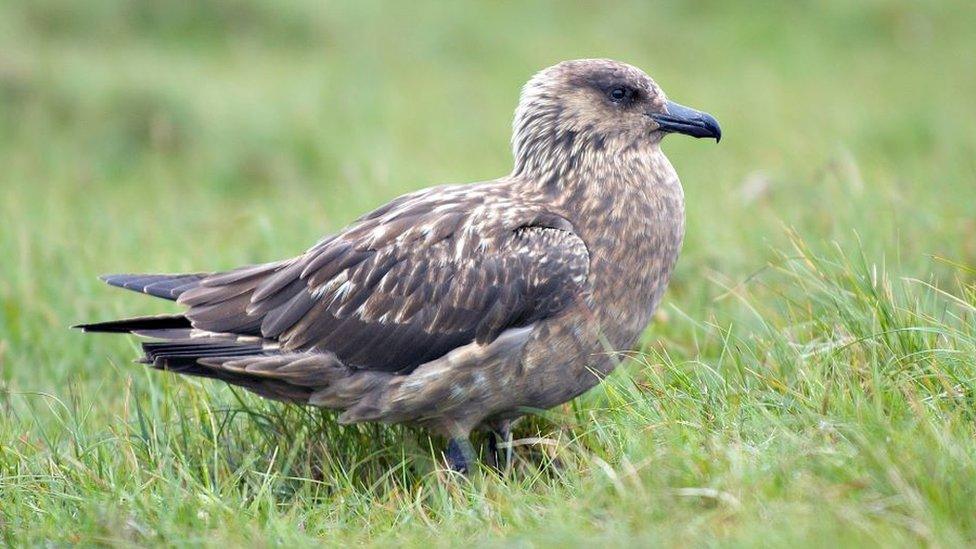
- Published16 June 2022
